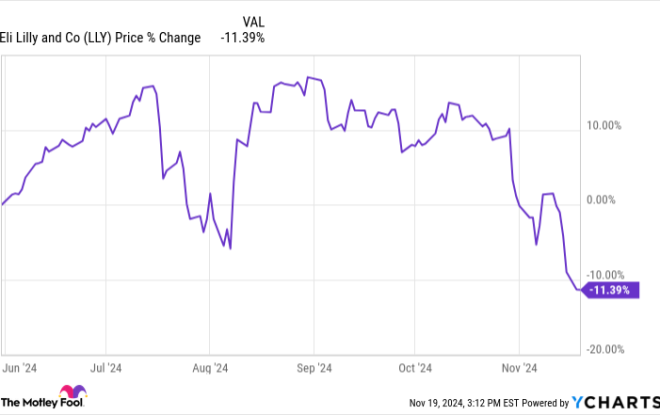Is It Wise to Convert 15% of My 401(k) Into a Roth IRA Each Year to Avoid Taxes and RMDs?
SmartAsset and Yahoo Finance LLC may earn commission or revenue through links in the content below.
Converting retirement funds from a 401(k) into a Roth IRA offers the opportunity for tax-free growth and tax-free withdrawals in retirement, while also avoiding Required Minimum Distribution (RMD) rules. However, Roth conversion requires paying a significant tax bill up front. Often, this initial tax bill can be partially mitigated by gradually converting the 401(k) over time to keep yourself in lower tax brackets. However, the dynamics of a shifting portfolio and income over time, as well as a five-year withdrawal limitation on conversions, may make a Roth conversion inappropriate in some circumstances. When a Roth conversion does look like a winner, converting a fixed percentage each year may or may not be the best approach either. Before embarking on a Roth conversion plan, consider talking it over with a financial advisor to determine if it makes sense for you.
Roth Conversion Strategies
Retirement funds in a 401(k) account are subject to federal income tax when withdrawn, and oftentimes state and local taxes, too. And because of RMD rules, savers with funds in tax-deferred retirement accounts such as 401(k) plans must begin withdrawing from the accounts once they reach age 73. That can create a tax burden for some retirees.
Those disadvantages prompt many retirement savers to consider Roth conversions, which roll over funds from 401(k) accounts to Roth IRAs. Once in the Roth account, investment earnings and qualified withdrawals are both tax-free. Roth accounts are also not subject to RMD rules, which gives retirees better control over their retirement funds.
However, the upfront tax bill for a Roth conversion can be steep. Converted funds are taxed as ordinary income, so converting a sizable 401(k) into a Roth IRA can put even a middle-income earner temporarily into the top 37% federal tax bracket and result in an enormous tax bill. For example, consider a single $100,000 earner in the 22% tax bracket for 2024 who ordinarily pays about $14,000 in federal income tax. If in one year they convert a $500,000 401(k) to a Roth IRA, the one-time tax bill would be an estimated $177,000, an increase of about $163,000.
Gradual conversions can help manage the tax consequences. The single $100,000 earner could convert up to $91,950 in a year and move up to the 24% bracket, incurring a one-time tax bill of approximately $36,000, adding about $22,000 to their tax bill that year. If it takes seven years of this to empty the account, accounting for average investing returns on the unconverted balance in the interim, the total cumulative federal tax bill would add up to approximately $153,000, a savings of about $10,000 compared to making the conversion all at once. Additionally, the amount of money converted to the Roth IRA would be higher than it would have been if converting all at once, thanks to theoretical portfolio growth during the staggered conversion period.
As was done in this example, conversion strategies often get better results when based on dollar amounts and the effect on tax brackets rather than percentages of the 401(k) balance. In addition, conversion plans often incorporate flexibility, which allows savers to convert larger amounts, for instance, in years when their income is lower. In any case, conversion strategies are best tailored to individual savers’ unique circumstances. Consider matching with a financial advisor to discuss your strategy.
Roth Conversion Limitations
Roth conversions aren’t always the best move. For example, they hold less attraction for retirees who will be in a lower tax bracket after retirement. These retirees’ overall tax bills may be lower if they leave money in a 401(k) and pay taxes on withdrawals in retirement.
The conversion math also may not add up for savers who are near retirement and will need Roth funds to pay retirement expenses. That’s because converted funds can’t be withdrawn tax-free for five years after conversion. A financial advisor can help you weigh the pros and cons of doing Roth conversions based on your personal goals and circumstances.
Finally, Roth conversions may make less sense for someone who plans to donate or leave money to charity. That’s because charitable gifts and bequests from a 401(k) can escape taxation, removing one of the lures of conversion
Bottom Line
Convert 15% of a 401(k) in a Roth IRA each year could be an effective way to manage taxes and avoid RMDs. However, much depends on individual circumstances and that strategy may not be the most efficient for many savers. Well-designed conversion strategies focus on dollar amounts and income tax brackets more than strict percentages. And Roth conversions may not make financial sense for people who are close to retirement, expect to be in lower tax brackets after retirement or plan to leave sizable legacies to charitable organizations from their 401(k) plans.
Tips
-
Before starting to convert funds from a 401(k) to a Roth, talk the plan over with a financial advisor who can help you construct what-if scenarios and models to examine the likely outcomes of various approaches. Finding a financial advisor doesn’t have to be hard. SmartAsset’s free tool matches you with up to three financial advisors in your area, and you can interview your advisor matches at no cost to decide which one is right for you. If you’re ready to find an advisor who can help you achieve your financial goals, get started now.
-
SmartAsset’s RMD Calculator allows you to quickly and easily project the size of future mandatory withdrawals from tax-deferred retirement accounts.
-
Keep an emergency fund on hand in case you run into unexpected expenses. An emergency fund should be liquid — in an account that isn’t at risk of significant fluctuation like the stock market. The tradeoff is that the value of liquid cash can be eroded by inflation. But a high-interest account allows you to earn compound interest. Compare savings accounts from these banks.
-
Are you a financial advisor looking to grow your business? SmartAsset AMP helps advisors connect with leads and offers marketing automation solutions so you can spend more time making conversions. Learn more about SmartAsset AMP.
Photo credit: ©iStock.com/Dragos Condrea, ©iStock.com/busracavus
The post Is It Wise to Convert 15% of My 401(k) Into a Roth IRA Each Year to Avoid Taxes and RMDs? appeared first on SmartReads by SmartAsset.





Leave a Reply